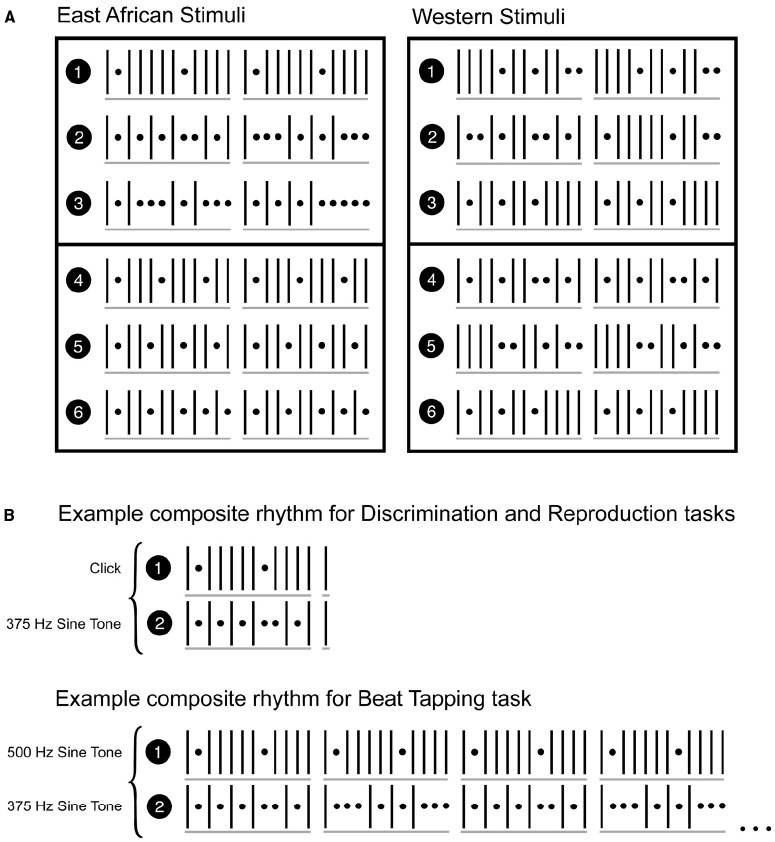FIGURE 1.

Stimulus rhythms. Vertical lines denote onsets, dots denote rests. Each position (onset or rest) is of equal duration, one of 180, 210, or 240 ms. (A) Depicts individual rhythms. Rhythms were presented in pairs, as composite rhythms. Both rhythms in a given composite rhythm were selected from the same group of three rhythms (rhythms numbered 1–3, and 4–6). Therefore, within each type (Western and East African), rhythm pairings were 1–2, 1–3, 2–3, 4–5, 4–6, 5–6. For the discrimination and reproduction tasks, only the first cycle of each rhythm (the first 12 units, plus the subsequent downbeat) was used. (B) Depicts examples of composite rhythms as used in the tasks. For the beat tapping task, entire rhythms as shown in (A) were repeated cyclically (only two repetitions are shown in the example in B). Audio examples of the stimuli (one of each rhythm type for each of the tasks) can be found in the supplementary material.
